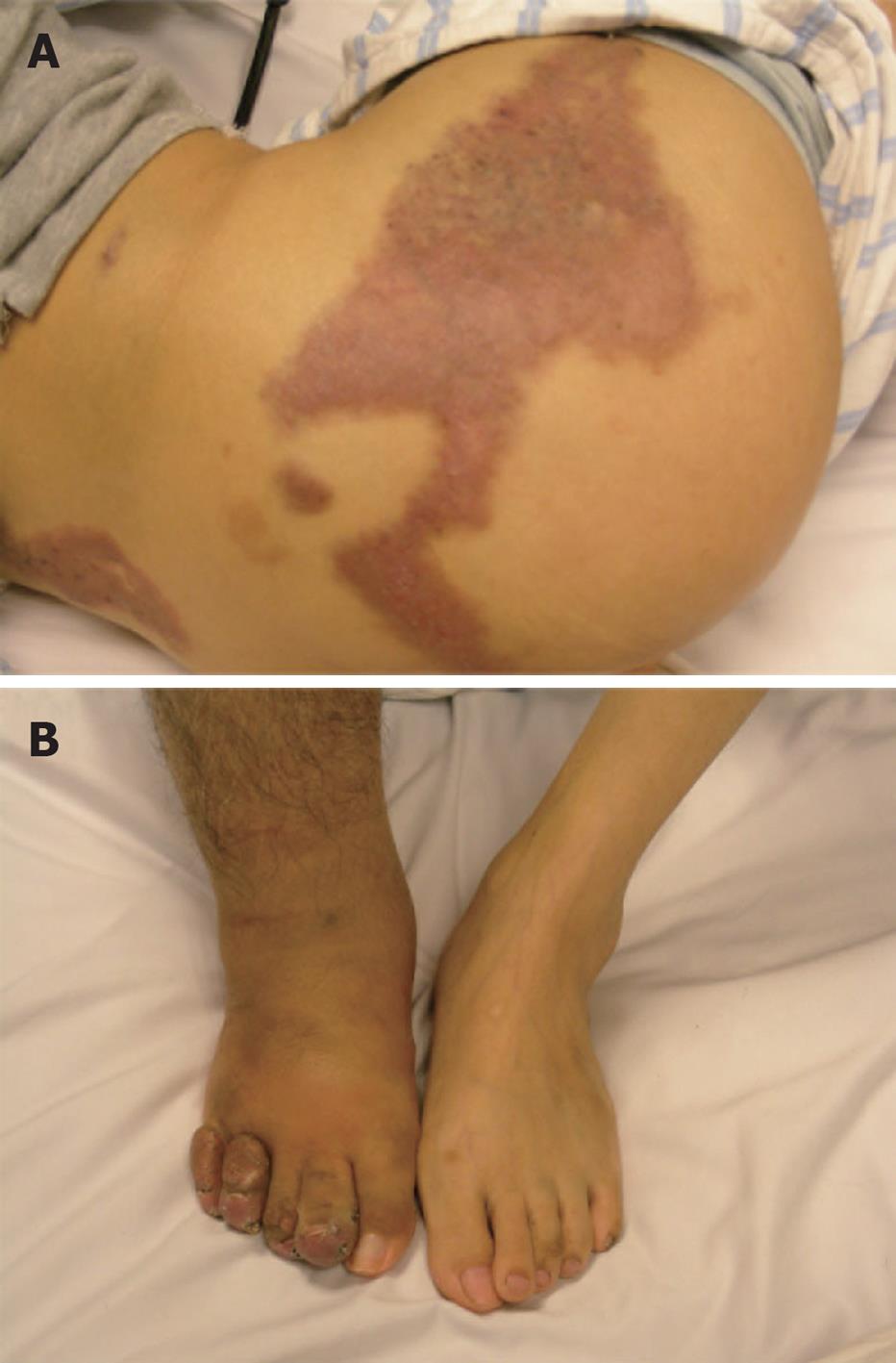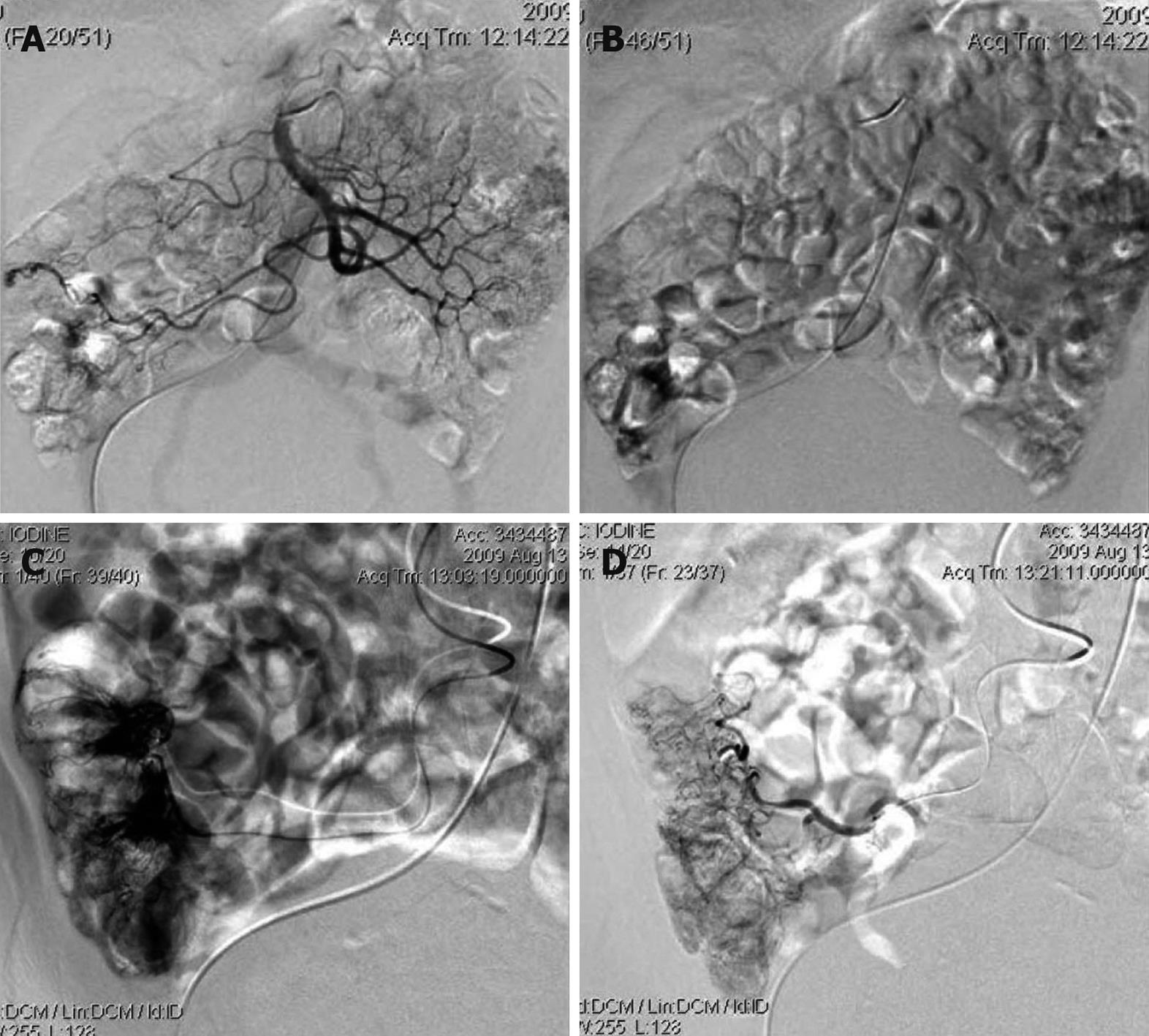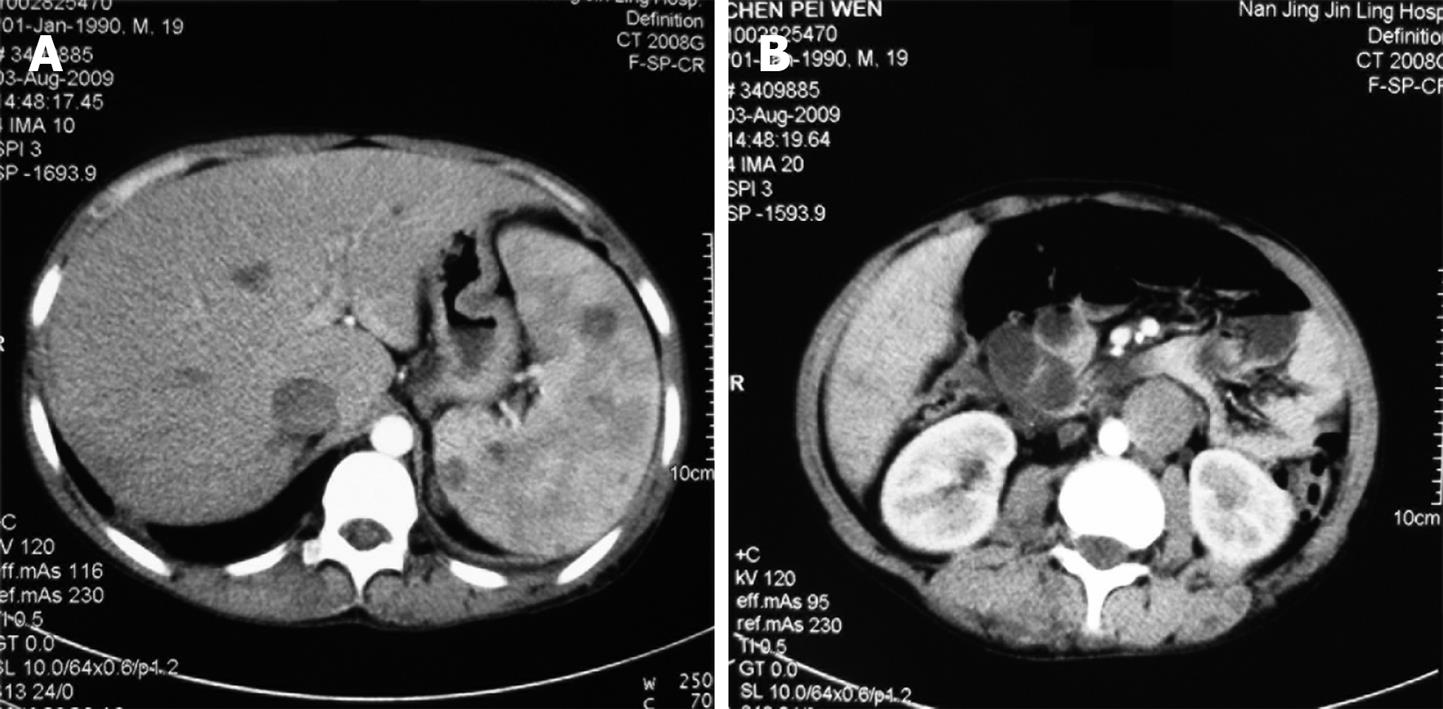Copyright
©2010 Baishideng.
World J Gastroenterol. Mar 28, 2010; 16(12): 1548-1552
Published online Mar 28, 2010. doi: 10.3748/wjg.v16.i12.1548
Published online Mar 28, 2010. doi: 10.3748/wjg.v16.i12.1548
Figure 1 Cutaneous vascular malformations and abnormal right leg in the patient.
A: Cutaneous vascular malformations of the gluteal region and body; B: The enlarged right leg.
Figure 2 Angiograms demonstrate contrast opacification of the superior mesenteric artery and its branches.
A: Some abnormal small veins that were filled earlier in the arterial phase; B: Manipulus contrast extravasation into the terminal ileum; C: Abnormal ectatic slow-emptying veins and extravasation of contrast material after superselective catheterization; D: No active bleeding after superselective vessel embolism with gelfoam.
Figure 3 Lesions of gastrointestinal tract on endoscopy.
A: Gastroscopy shows multiple polypoid mucosal nodules with abundant vasculature which had a purplish red chrysanthemum-like surface, which are centrally located at the greater curvature of the gastric antrum and gastric corpus; B: Colonoscopy shows several polypoid mass lesions with abundant vasculature, which are centrally located from the terminal ileum to the descending colon; C: Capsule endoscopy revealing several vascular malformation lesions distributing over the jejunum and ileum.
Figure 4 Contrast-enhanced abdominal computed tomography (CT) showing splenic hemangiomas (A) and left inferior vena cava (IVC) (B).
- Citation: Wang ZK, Wang FY, Zhu RM, Liu J. Klippel-Trenaunay syndrome with gastrointestinal bleeding, splenic hemangiomas and left inferior vena cava. World J Gastroenterol 2010; 16(12): 1548-1552
- URL: https://www.wjgnet.com/1007-9327/full/v16/i12/1548.htm
- DOI: https://dx.doi.org/10.3748/wjg.v16.i12.1548
















